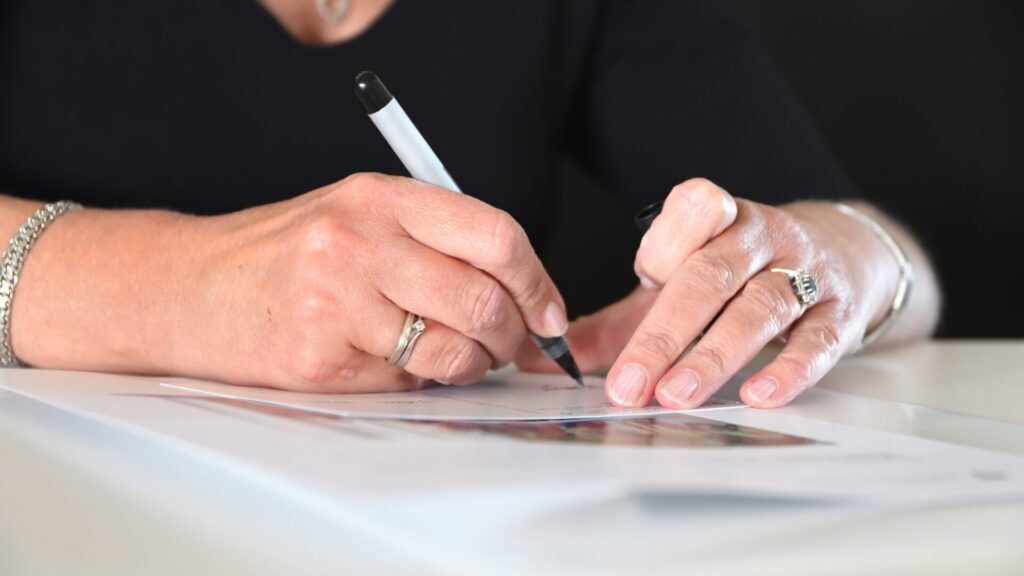
Verbal ceremonies are a critical aspect of notarizations, ensuring that the signers understand the significance of the document they are signing and that the notary fulfills their legal duties. For California notaries, mastering these ceremonies is not just a legal requirement but also a mark of professionalism and competence. This article will explore the essential verbal ceremonies every California notary should master, providing detailed guidance and best practices to ensure compliance and excellence in notarization.
Table of Contents
Understanding Verbal Ceremonies in Notarizations
Definition and Purpose
Verbal ceremonies in notarizations are formal statements made by the notary and the signer to affirm the authenticity and understanding of the document being signed. These ceremonies are legally mandated in California and are crucial in various notarizations, such as acknowledgments, jurats, and oaths or affirmations.
The purpose of verbal ceremonies is to ensure that the signer is aware of the document’s contents and is signing willingly and knowingly. These ceremonies also serve as a safeguard against fraud and coercion. In California, notaries must follow specific verbal protocols to validate the notarization process. This includes asking the signer to confirm their identity, understanding of the document, and willingness to sign it.
Types of Notarizations Requiring Verbal Ceremonies
Common types of notarizations requiring verbal ceremonies include acknowledgments, where the signer acknowledges their signature on a document, and jurats, where the signer swears or affirms the truthfulness of the document’s contents. By mastering these ceremonies, California notaries can uphold the integrity of the notarization process and ensure legal compliance.
The Oath or Affirmation and Jurat Ceremony

Definition and Importance
Oaths and affirmations, combined with jurats, are notarial acts where the signer swears or affirms the truthfulness of the document’s contents. An oath is a pledge made to a higher power, while an affirmation is a solemn promise made on personal honor, suitable for those who prefer not to swear religiously. A jurat involves the notary witnessing the signing of the document and administering the oath or affirmation.
Legal Wording and Procedures
The legal wording for an oath typically includes a phrase like, “Do you solemnly swear that the contents of this document are true, so help you God?” For an affirmation, it might be, “Do you solemnly affirm that the contents of this document are true under penalty of perjury?” For a jurat, the notary asks, “Do you swear or affirm that the statements in this document are true, so help you God (or under penalty of perjury)?” The signer must respond affirmatively for the jurat to be valid.
Administering an oath or affirmation involves clearly stating the oath or affirmation and receiving a verbal confirmation from the signer. This ceremony is necessary for documents like affidavits and depositions, where the truthfulness of the content is paramount. Notaries should ensure that the signer understands the significance of the oath or affirmation and the consequences of perjury.
Best Practices for Administering Oaths and Affirmations
Best practices for administering oaths and affirmations include speaking clearly and audibly, making sure the signer is attentive and understands the statement, and documenting the oath or affirmation in the notary journal. This thorough approach helps maintain the ceremony’s formality and legal integrity.
Procedures for Conducting a Jurat
The procedures for conducting a jurat include verifying the signer’s identity, administering the oath or affirmation, and witnessing the signer’s signature. The notary then completes the jurat certificate, confirming that the signer took the oath or affirmation and signed the document in their presence.
Differences Between Jurat and Acknowledgment
The primary difference between a jurat and an acknowledgment is that a jurat involves a sworn statement about the truthfulness of the document’s contents, while an acknowledgment only confirms the signer’s identity and voluntary signing. Notaries should be aware of these differences and ensure they perform the correct ceremony for each type of notarization.
Practical Tips for Notaries
Practical tips for notaries include maintaining a calm and professional demeanor during the jurat ceremony, clearly explaining the significance of the oath or affirmation to the signer, and ensuring all required steps are followed meticulously.
The Acknowledgment Ceremony

Purpose and Legal Significance
Acknowledgments are a fundamental notarial act where the signer declares to the notary that they willingly signed the document. This ceremony confirms the identity of the signer and their acknowledgment of signing the document for its intended purpose.
Required Verbal Components
In California, the required verbal components of an acknowledgment include the notary asking the signer, “Do you acknowledge that this is your signature and that you signed this document freely and voluntarily?” The signer must respond affirmatively for the acknowledgment to be valid.
Conducting an Acknowledgment Ceremony
Conducting an acknowledgment ceremony involves verifying the signer’s identity through approved identification documents, confirming their willingness to sign, and ensuring they understand the document. The notary then completes the acknowledgment certificate, stating that the signer appeared before them and made the declaration.
Common Mistakes to Avoid
Common mistakes to avoid during acknowledgment ceremonies include failing to verify the signer’s identity properly, neglecting to ask the required questions, and not completing the acknowledgment certificate accurately. By following the correct procedures, notaries can ensure the acknowledgment is legally binding and protects all parties involved.
Best Practices for Conducting Verbal Ceremonies

Maintaining Professionalism
Conducting verbal ceremonies requires professionalism, clarity, and adherence to legal requirements. General tips for maintaining professionalism include dressing appropriately, maintaining a respectful and composed demeanor, and ensuring a distraction-free environment for the ceremony.
Ensuring Clarity and Understanding
Ensuring clarity and understanding with the signer involves speaking clearly, confirming the signer’s comprehension of the document and the ceremony, and answering any questions they may have. This approach helps prevent misunderstandings and ensures the signer’s full awareness and consent.
Handling Difficult Situations and Signers
Handling difficult situations and signers can be challenging but is an essential skill for notaries. Techniques include staying calm, being patient, and clearly explaining the legal requirements and procedures. If a signer is uncooperative or refuses to follow the procedures, the notary may need to decline the notarization to maintain legal compliance.
Record-Keeping and Documentation
Record-keeping and documentation are crucial aspects of notarial practice. Notaries should meticulously document each notarization in their journal, including details of the verbal ceremony, the signer’s identification, and any relevant observations. This thorough documentation helps protect the notary and provides a clear record of the notarization process.
Staying Updated with California Notary Laws

Importance of Staying Current
Staying current with legal changes and updates is vital for California notaries to ensure compliance and professional growth. The legal landscape for notaries can change, and it is the notary’s responsibility to stay informed about these changes.
Resources for Ongoing Education and Updates
Resources for ongoing education and updates include the California Secretary of State’s website, professional notary organizations, and continuing education courses. These resources provide valuable information on legal updates, best practices, and professional development opportunities.
Professional Organizations and Support Networks
Professional organizations and support networks, such as the National Notary Association (NNA) and local notary associations, offer valuable resources, networking opportunities, and support for notaries. Joining these organizations can help notaries stay informed and connected with the notary community.
Final Tips for Continuous Improvement
Final tips for continuous improvement include regularly reviewing the California Notary Public Handbook, attending training and workshops, and seeking feedback from peers and mentors. By committing to ongoing education and improvement, notaries can ensure they provide the highest level of service and maintain legal compliance.
Conclusion
Mastering verbal ceremonies is essential for every California notary. These ceremonies ensure the integrity and legality of the notarization process and protect all parties involved. By understanding and following the correct procedures, notaries can provide professional and compliant services.
This article has covered the key verbal ceremonies every California notary should master, including oaths or affirmations, acknowledgments, and jurats. Best practices for conducting these ceremonies and staying updated with California notary laws have also been discussed.
By committing to ongoing education and professional development, California notaries can continuously improve their skills and provide exceptional service. Mastering these verbal ceremonies is a crucial step in ensuring the integrity and success of the notarization process.
